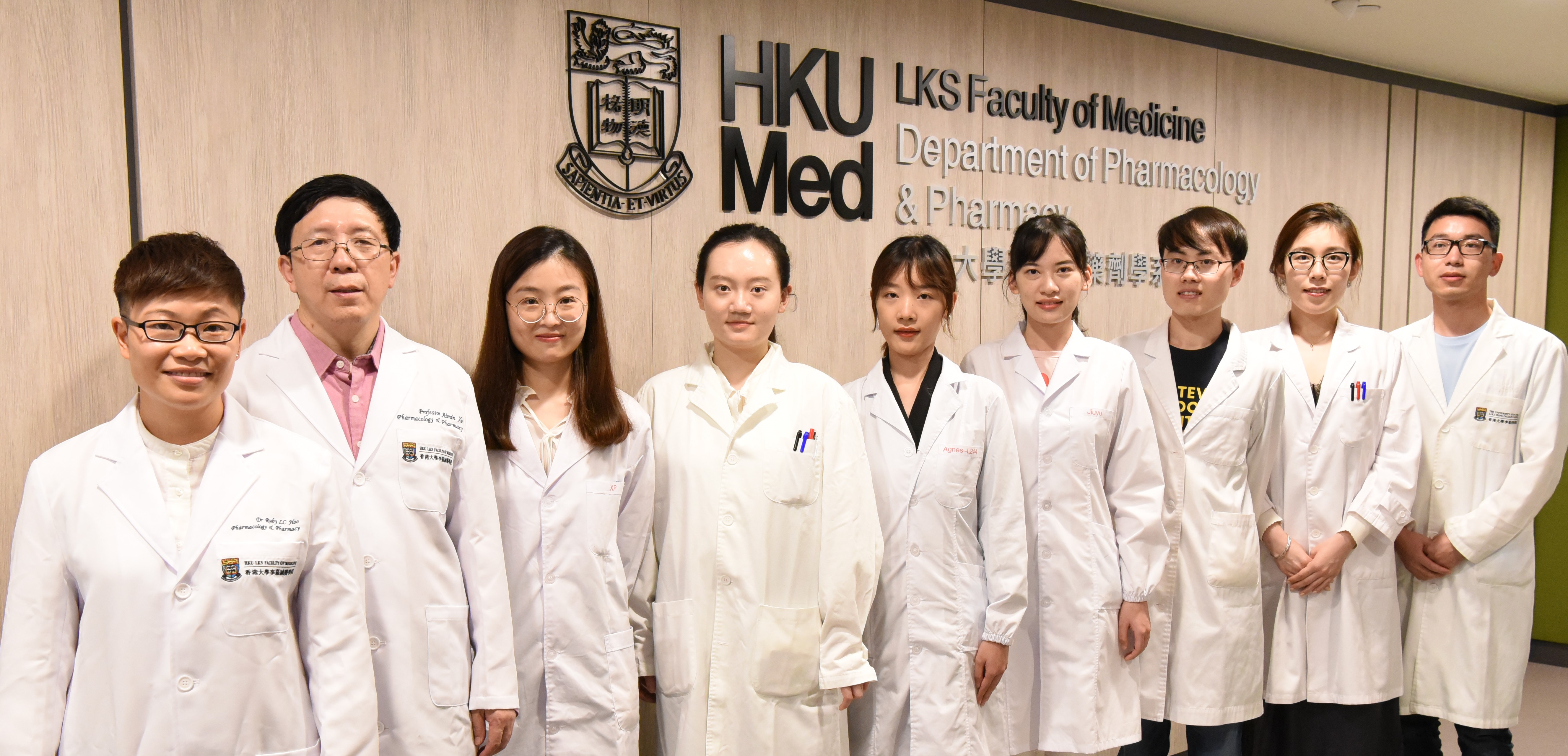03 June 2020
A research team from the LKS Faculty of Medicine, The University of Hong Kong (HKUMed) has discovered a new regulator of blood-brain barrier disruption in ischaemia stroke. The discovery provides insight into the new mechanism of blood-brain barrier disruption which allows the future development of effective pharmacological therapy for patients with ischemia stroke.
The blood-brain barrier is a highly selective semipermeable membrane that restricts the entrance of the blood-borne substances into the brain thus maintaining cerebral homeostasis to allow proper function of the neurons. Blood-brain barrier-disruption after ischemic stroke is a key event that precedes various neurological disorders while the contributing factors that govern the process remain unclear.
The new findings are the concerted efforts of research teams from the Department of Pharmacology and Pharmacy, Department of Medicine, School of Biological Sciences, HKUMed and other research institutes including First Affiliated Hospital of Anhui Medical University, Sun Yat-sen University, Shenzhen Institutes of Advanced Technology, Chinese Academy of Sciences and Macau University of Science and Technology. The findings are published in European Heart Journal [link to the publication].
Background
Stroke is a major cause of permanent disability and death worldwide, whereby ischaemic stroke accounts for more than 80 % of its incidence. However, treatment methods are limited and tissue plasminogen activator is the only pharmacological treatment for acute ischaemic stroke approved by the U.S. Food and Drug Administration. Thus, there is an urgent need for the development of new and effective pharmacological therapies to improve the outcome of ischaemic stroke. Blood-brain barrier-disruption following ischaemia stroke is a key event that worsens the stroke outcome while the principal regulators that initiate or contribute to the process remain elusive.
Adipocyte fatty acid binding protein (A-FABP) is a fat-derived hormone while it can also be expressed in endothelial cells and macrophages. It plays an important role in the uptake, transportation and the metabolism of long-chain fatty acids. A-FABP is closely related to various metabolic diseases such as type 2 diabetes, atherosclerosis and myocardial infarction. These metabolic diseases are the risk factors of ischaemic stroke. Clinical studies implicated the involvement of A-FABP in the progression and the pathogenesis of ischaemic stroke, but the exact role and the underlying mechanism of it have never been investigated.
Research methodology and findings
The research team used A-FABP deficient mice and their wild-type littermates for the study. These mice were subjected to Middle Cerebral Artery Occlusion (MCAO) surgery to mimic ischaemic stroke in human. In another experiment, wild-type mice subjected to MCAO surgery were post-treated with A-FABP selective inhibitor. Our results showed that circulating A-FABP and its cerebral expression were significantly increased in wild-type mice after MCAO surgery. Peripheral blood monocyte-derived macrophages and cerebral resident microglia were identified as the major cellular source of ischaemia-induced A-FABP.
Genetic deletion and pharmacological inhibition of A-FABP reduced cerebral ischemia injury with diminished infarction volume, cerebral oedema, neurological deficits, and neuronal apoptosis in mice. Blood-brain barrier disruption was also attenuated.
In vitro and animal studies further demonstrated that ischemia-induced increase of A-FABP promoted the expression and activity of matrix metalloproteinase 9, thus enhancing degradation of tight junction proteins and exaggerating BBB disruption. Our clinical findings also supported this newly identified mechanism. The above findings define A-FABP as a novel target for the treatment of ischaemic stroke.
Significance
The HKUMed research team is the first to provide evidence that A-FABP is pathologically involved in the worsening of ischaemic stroke outcome by exaggerating blood-brain barrier disruption. A-FABP also plays a negative regulatory role in the recovery of ischaemic stroke. This discovery defines A-FABP as a novel therapeutic target for ischaemic stroke. Based on the findings above, the team is now collaborating with Shenzhen Institute of Advanced Technology, Chinese Academy of Sciences for the development of A-FABP monoclonal neutralizing antibody for the treatment of ischemic stroke. Pre-clinical evaluation of the neutralizing antibody will be done in the near future.
About the research team
This research was led by Dr Ruby Hoo Lai-chong, Assistant Professor of the Department of Pharmacology and Pharmacy, HKUMed and Co-investigator of State Key Laboratory of Pharmaceutical Biotechnology, HKU and Professor Wang Kai of the Department of Neurology, First Affiliated Hospital of Anhui Medical University. Dr Liao Boya, post-doctoral fellow in the Department of Pharmacology and Pharmacy, HKUMed and Dr Geng Leiluo, post-doctoral fellow in the Department of Medicine, HKUMed are the co-first authors. Professor Xu Aimin, Chair Professor of Metabolic Medicine, Department of Medicine, Chair Professor of Department of Pharmacology and Pharmacy, HKUMed and Director of State Key Laboratory of Pharmaceutical Biotechnology, HKU; Professor Karen Lam Siu-ling, Rosie TT Young Professor in Endocrinology and Metabolism, Chair Professor in Medicine, Department of Medicine, HKUMed and Clinical Director of State Key Laboratory of Pharmaceutical Biotechnology, HKU; Dr Shu Lingling, post-doctoral fellow, Department of Medicine, HKUMed; [Professor Paul M. Vanhoutte], Department of Pharmacology and Pharmacy, HKUMed; Dr Patrick Yeung Ka-kit, former Research Associate, School of Biomedical Sciences, HKUMed; Dr Zhang Fang, Department of Radiology, Sun Yat-Sen University; Dr Wei Ling, Department of Neurology, First Affiliated Hospital of Anhui Medical University; Professor Chang Junlei, Shenzhen Institute of Advanced Technology and Professor Chung Sookja Kim, Macau University of Science and Technology are the co-authors.
Acknowledgements
This study was supported by the Natural Science Foundation of China (81770885), Shenzhen Basic Research Grant (201605303000678), collaborative research fund (C7037-17W), Area of Excellence Scheme (AOE/M-707/18) from Research Grants Council of the Hong Kong Special Administrative Region, Science and technology major project of Hunan Province (2017SK1020), National Key Research and Development Program of China (2016YFC13000604), Innovation and Technology Commission-FASII (GHP/079/18SZ) and Shenzhen-Hong Kong Joint Research Program (SGLH20180625142404672).
Media enquiries
Please contact LKS Faculty of Medicine of The University of Hong Kong by email (medmedia@hku.hk).


Follow HKUMed